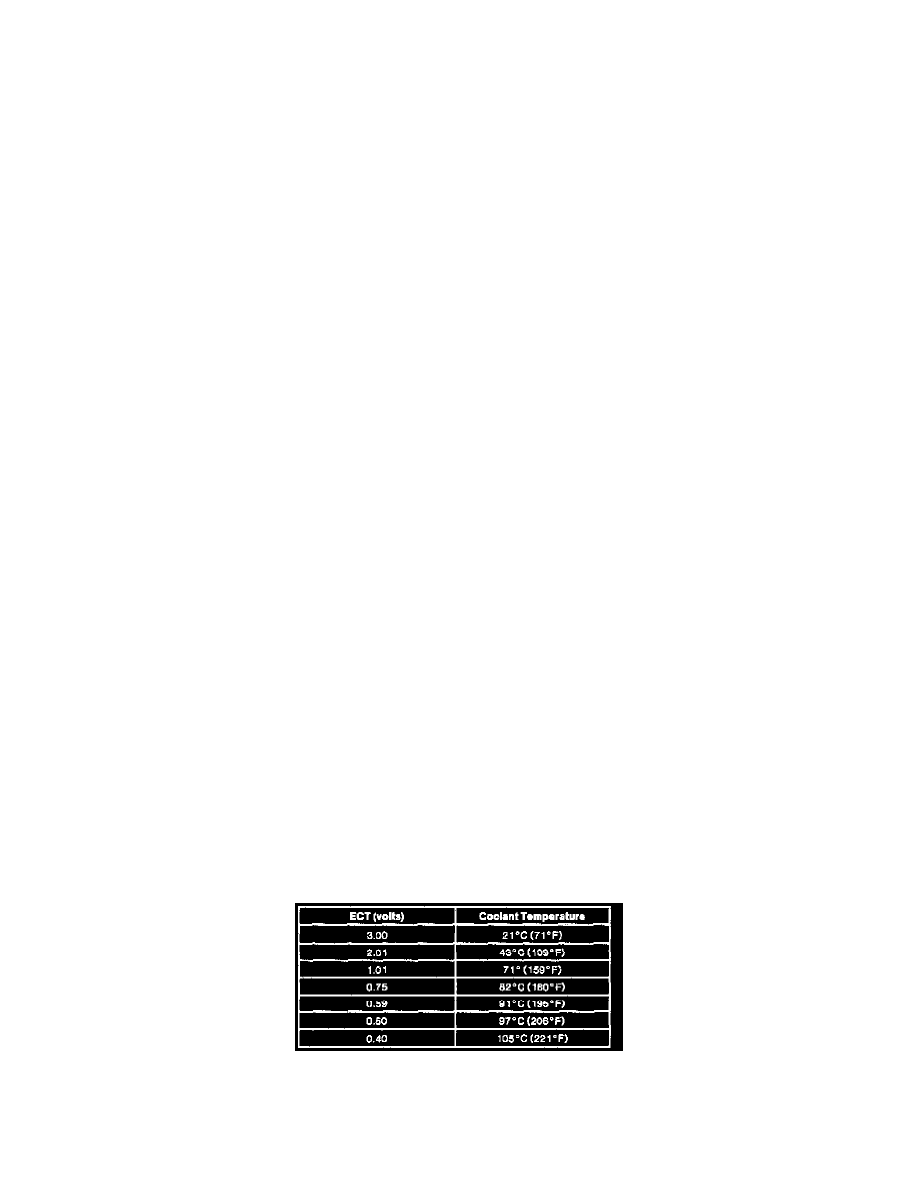Taurus V6-182 3.0L FF (1995)

Thermostat: Testing and Inspection
WATER THERMOSTAT TEST
NOTE: When investigating a concern of overheating or insufficient heater/defroster performance, the following tests should be performed:
1. Check and service any leaks:
a. Radiator cap
b. Heater hoses
c. Radiator hoses
d. Water outlet connection gasket
e. Cylinder head
f.
Water pump housing gasket
2. Check cold engine coolant level in radiator and radiator coolant recovery reservoir.
a. If level is below radiator filler neck, fill to filler neck with a 50/50 mixture of Ford Premium Cooling System Fluid E2FZ-19549-AA or B (in
Canada CXC-8-B) or equivalent meeting Ford specification ESE-M97B44-A and water. Add coolant to radiator coolant recovery reservoir to
the FULL COLD mark.
b. If the cold coolant level in the radiator is sufficient, run the vehicle for 10 minutes with the radiator cap off and check for coolant circulation
through the heater core and radiator. If the coolant drops below the radiator filler neck, add a 50/50 mixture of Ford Premium Cooling System
Fluid E2FZ-19549-AA or B (in Canada CXC-8-B) or equivalent meeting Ford specification ESE-M97B44-A and water through the filler neck.
Repeat the above procedure until all the air is purged from the engine cooling system. When this procedure has been completed, feel the heater
inlet and outlet hoses and the underside of the upper radiator hose. The water thermostat should be removed only if these hoses are cold or if
no coolant circulation is observed through the radiator after 10 minutes of operation.
NOTE: Disconnecting the Powertrain Control Module (PCM) to attach EEC-IV Breakout Box T83L-50-EEC-IV or equivalent or an EEC-IV
Monitor will erase the adaptive learning from memory and may "hide" a drive concern temporarily until the adaptive learning is re-learned.
NOTE: Procedure is most accurate if performed indoors at less than 39° C (100° F) ambient air. This test may be performed with or without
the hood open and with the engine warm or cold.
CAUTION: Always vent the exhaust to the outside when performing this test.
3. With the ignition switch in the OFF position, remove the Engine Coolant Temperature (ECT) sensor harness connect the Rotunda Cooling System
Simulator 007-00062 or equivalent between the PCM and the ECT sensor. Connect Rotunda 73 Digital Multimeter 105-00051 or equivalent to the
monitor harness. Voltage values, (0-5 V), may now be monitored while the engine coolant temperature sensor retains its connection to the fuel
charging wiring.
NOTE: A Rotunda New Generation Star (NGS) Tester on the Service Bay Diagnostic System (SBDS) may be used to monitor the ECT sensor on
vehicles equipped with Data Communication Link (DCL). The SBDS sequence to use for the screen is: "Toolbox-Electronic Engine Control and
DCL-Item".
4. Cooling fan motor and fan blade must be running during this test, (high or low speed may be used). Two methods may be used to turn the radiator
electric motor ON:
a. Disconnect the A/C compressor clutch power supply and turn the climate control to A/C ON.
b. Disconnect the power supply to the cooling fan motor and supply 12 volts directly to the radiator electric motor from the battery.
NOTE: A ground may be required for some applications.
5. Place transaxle in PARK or NEUTRAL.
NOTE: Running test with the vehicle in gear or with the A/C clutch engaged (running), will cause IMPROPER DIAGNOSIS.
Voltage and Corresponding Cooling Temperature Chart
6. START the engine and allow to idle throughout this test. Allow engine to run for 2 minutes, then record the ECT sensor voltage. Now record ECT
sensor voltage every 60 seconds. When ECT sensor voltage trend changes direction or only changes slightly (0.03 volts or less) from the previous
